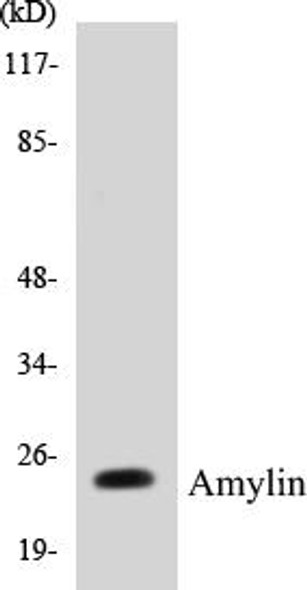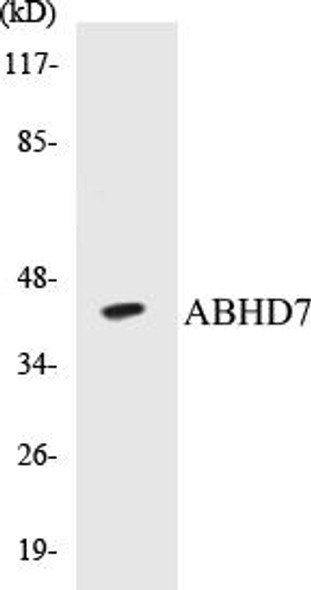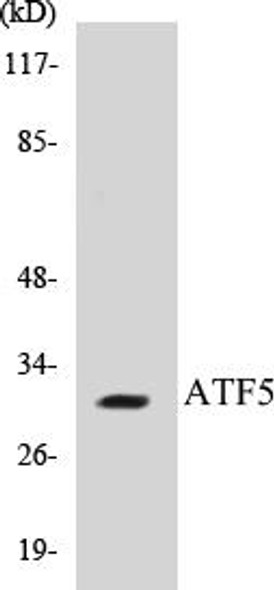Description
MCM2 Colorimetric Cell-Based ELISA Kit
The MCM2 Colorimetric Cell-Based ELISA Kit from Assay Genie is a cutting-edge tool for detecting levels of MCM2 in a variety of samples, including cell lysates and tissue homogenates. With its high sensitivity and specificity, this kit provides accurate and reliable results, making it a valuable asset for researchers studying DNA replication and cell cycle regulation.MCM2, a key component of the pre-replicative complex, is essential for DNA replication and plays a critical role in maintaining genomic stability.
Dysregulation of MCM2 has been implicated in various diseases, including cancer and developmental disorders, making it a promising target for therapeutic intervention. By measuring MCM2 levels using this ELISA kit, researchers can gain insights into its role in disease pathogenesis and potentially identify new treatment strategies.
| Product Name: | MCM2 Colorimetric Cell-Based ELISA |
| Product Code: | CBCAB00327 |
| ELISA Type: | Cell-Based |
| Target: | MCM2 |
| Reactivity: | Human, Mouse |
| Dynamic Range: | > 5000 Cells |
| Detection Method: | Colorimetric 450 nmStorage/Stability:4°C/6 Months |
| Format: | 96-Well Microplate |
The MCM2 Colorimetric Cell-Based ELISA Kit is a convenient, lysate-free, high throughput and sensitive assay kit that can detect MCM2 protein expression profile in cells. The kit can be used for measuring the relative amounts of MCM2 in cultured cells as well as screening for the effects that various treatments, inhibitors (ie siRNA or chemicals), or activators have on MCM2.
Qualitative determination of MCM2 concentration is achieved by an indirect ELISA format. In essence, MCM2 is captured by MCM2-specific primary antibodies while the HRP-conjugated secondary antibodies bind the Fc region of the primary antibody. Through this binding, the HRP enzyme conjugated to the secondary antibody can catalyze a colorimetric reaction upon substrate addition. Due to the qualitative nature of the Cell-Based ELISA, multiple normalization methods are needed:
| 1. | A monoclonal antibody specific for human GAPDH is included to serve as an internal positive control in normalizing the target absorbance values. |
| 2. | Following the colorimetric measurement of HRP activity via substrate addition, the Crystal Violet whole-cell staining method may be used to determine cell density. After staining, the results can be analysed by normalizing the absorbance values to cell amounts, by which the plating difference can be adjusted. |
| Database Information: | Gene ID: 4171, UniProt ID: P49736, OMIM: 116945, Unigene: Hs.477481 |
| Gene Symbol: | MCM2 |
| Sub Type: | None |
| UniProt Protein Function: | MCM2: a mini-chromosome maintenance protein, essential for the initiation of eukaryotic genome replication. Allows DNA to undergo a single round of replication per cell cycle. Required for the entry in S phase and for cell division. |
| UniProt Protein Details: | Protein type:DNA-binding; EC 3.6.4.12 Chromosomal Location of Human Ortholog: 3q21 Cellular Component: microtubule cytoskeleton; nucleoplasm; MCM complex; cytoplasm; nuclear origin of replication recognition complex; nucleus; chromatin Molecular Function:protein binding; DNA helicase activity; DNA binding; histone binding; metal ion binding; DNA replication origin binding; ATP binding Biological Process: DNA unwinding during replication; nucleosome assembly; DNA replication initiation; DNA strand elongation during DNA replication; mitotic cell cycle; cell cycle; DNA replication; G1/S transition of mitotic cell cycle |
| NCBI Summary: | The protein encoded by this gene is one of the highly conserved mini-chromosome maintenance proteins (MCM) that are involved in the initiation of eukaryotic genome replication. The hexameric protein complex formed by MCM proteins is a key component of the pre-replication complex (pre_RC) and may be involved in the formation of replication forks and in the recruitment of other DNA replication related proteins. This protein forms a complex with MCM4, 6, and 7, and has been shown to regulate the helicase activity of the complex. This protein is phosphorylated, and thus regulated by, protein kinases CDC2 and CDC7. Multiple alternatively spliced transcript variants have been found, but the full-length nature of some variants has not been defined. [provided by RefSeq, Oct 2012] |
| UniProt Code: | P49736 |
| NCBI GenInfo Identifier: | 41019490 |
| NCBI Gene ID: | 4171 |
| NCBI Accession: | P49736.4 |
| UniProt Secondary Accession: | P49736,Q14577, Q15023, Q8N2V1, Q969W7, Q96AE1, Q9BRM7 |
| UniProt Related Accession: | P49736 |
| Molecular Weight: | 904 |
| NCBI Full Name: | DNA replication licensing factor MCM2 |
| NCBI Synonym Full Names: | minichromosome maintenance complex component 2 |
| NCBI Official Symbol: | MCM2 |
| NCBI Official Synonym Symbols: | BM28; CCNL1; CDCL1; cdc19; D3S3194; MITOTIN |
| NCBI Protein Information: | DNA replication licensing factor MCM2; cyclin-like 1; nuclear protein BM28; cell devision cycle-like 1; minichromosome maintenance protein 2 homolog; minichromosome maintenance deficient 2 (mitotin); MCM2 minichromosome maintenance deficient 2, mitotin |
| UniProt Protein Name: | DNA replication licensing factor MCM2 |
| UniProt Synonym Protein Names: | Minichromosome maintenance protein 2 homolog; Nuclear protein BM28 |
| Protein Family: | DNA replication licensing factor |
| UniProt Gene Name: | MCM2 |
| UniProt Entry Name: | MCM2_HUMAN |
| Component | Quantity |
| 96-Well Cell Culture Clear-Bottom Microplate | 2 plates |
| 10X TBS | 24 mL |
| Quenching Buffer | 24 mL |
| Blocking Buffer | 50 mL |
| 15X Wash Buffer | 50 mL |
| Primary Antibody Diluent | 12 mL |
| 100x Anti-Phospho Target Antibody | 60 µL |
| 100x Anti-Target Antibody | 60 µL |
| Anti-GAPDH Antibody | 60 µL |
| HRP-Conjugated Anti-Rabbit IgG Antibody | 12 mL |
| HRP-Conjugated Anti-Mouse IgG Antibody | 12 mL |
| SDS Solution | 12 mL |
| Stop Solution | 24 mL |
| Ready-to-Use Substrate | 12 mL |
| Crystal Violet Solution | 12 mL |
| Adhesive Plate Seals | 2 seals |
The following materials and/or equipment are NOT provided in this kit but are necessary to successfully conduct the experiment:
- Microplate reader able to measure absorbance at 450 nm and/or 595 nm for Crystal Violet Cell Staining (Optional)
- Micropipettes with capability of measuring volumes ranging from 1 µL to 1 ml
- 37% formaldehyde (Sigma Cat# F-8775) or formaldehyde from other sources
- Squirt bottle, manifold dispenser, multichannel pipette reservoir or automated microplate washer
- Graph paper or computer software capable of generating or displaying logarithmic functions
- Absorbent papers or vacuum aspirator
- Test tubes or microfuge tubes capable of storing ≥1 ml
- Poly-L-Lysine (Sigma Cat# P4832 for suspension cells)
- Orbital shaker (optional)
- Deionized or sterile water
*Note: Protocols are specific to each batch/lot. For the correct instructions please follow the protocol included in your kit.
| Step | Procedure |
| 1. | Seed 200 µL of 20,000 adherent cells in culture medium in each well of a 96-well plate. The plates included in the kit are sterile and treated for cell culture. For suspension cells and loosely attached cells, coat the plates with 100 µL of 10 µg/ml Poly-L-Lysine (not included) to each well of a 96-well plate for 30 minutes at 37°C prior to adding cells. |
| 2. | Incubate the cells for overnight at 37°C, 5% CO2. |
| 3. | Treat the cells as desired. |
| 4. | Remove the cell culture medium and rinse with 200 µL of 1x TBS, twice. |
| 5. | Fix the cells by incubating with 100 µL of Fixing Solution for 20 minutes at room temperature. The 4% formaldehyde is used for adherent cells and 8% formaldehyde is used for suspension cells and loosely attached cells. |
| 6. | Remove the Fixing Solution and wash the plate 3 times with 200 µL 1x Wash Buffer for five minutes each time with gentle shaking on the orbital shaker. The plate can be stored at 4°C for a week. |
| 7. | Add 100 µL of Quenching Buffer and incubate for 20 minutes at room temperature. |
| 8. | Wash the plate 3 times with 1x Wash Buffer for 5 minutes each time. |
| 9. | Add 200 µL of Blocking Buffer and incubate for 1 hour at room temperature. |
| 10. | Wash 3 times with 200 µL of 1x Wash Buffer for 5 minutes each time. |
| 11. | Add 50 µL of 1x primary antibodies (Anti-MCM2 Antibody and/or Anti-GAPDH Antibody) to the corresponding wells, cover with Parafilm and incubate for 16 hours (overnight) at 4°C. If the target expression is known to be high, incubate for 2 hours at room temperature. |
| 12. | Wash 3 times with 200 µL of 1x Wash Buffer for 5 minutes each time. |
| 13. | Add 50 µL of 1x secondary antibodies (HRP-Conjugated AntiRabbit IgG Antibody or HRP-Conjugated Anti-Mouse IgG Antibody) to corresponding wells and incubate for 1.5 hours at room temperature. |
| 14. | Wash 3 times with 200 µL of 1x Wash Buffer for 5 minutes each time. |
| 15. | Add 50 µL of Ready-to-Use Substrate to each well and incubate for 30 minutes at room temperature in the dark. |
| 16. | Add 50 µL of Stop Solution to each well and read OD at 450 nm immediately using the microplate reader. |
(Additional Crystal Violet staining may be performed if desired – details of this may be found in the kit technical manual.)






